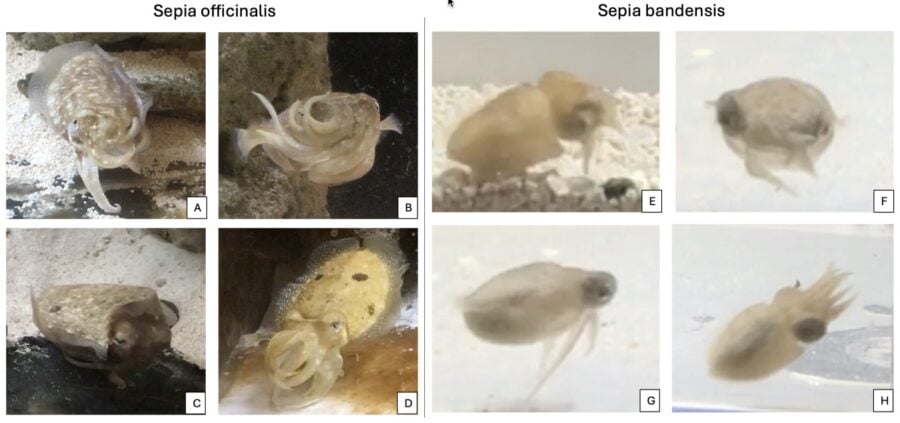Scientists have discovered that cuttlefish use distinct arm movements to communicate with each other, adding another dimension to these already remarkable marine creatures.
Researchers from the École Normale Supérieure in Paris and the Italian Institute of Technology have identified specific arm gestures they’ve named “arm wave signs” that appear to serve as a communication system between cuttlefish. The study, published this month in bioRxiv, reveals that these underwater signals can be perceived both visually and through water vibrations – essentially creating a multi-sensory conversation.
According to the researchers, this newly discovered behavior involves distinct arm movements that follow specific patterns in two cuttlefish species. These arm wave signs involve deliberate, expressive arm undulations that can last several seconds and be combined in various sequences.
The research team, led by Sophie Cohen-Bodénès and Peter Neri, documented these movements over months of observation. They identified four distinct gestures they named “up,” “side,” “roll,” and “crown” signs. Each movement involves different arm positions and undulating motions, often combined with color changes on the cuttlefish’s skin.
What makes this discovery particularly intriguing is that the cuttlefish responded differently to these signals depending on their orientation. When shown videos of other cuttlefish performing these arm waves, the animals were significantly more likely to “wave back” when the video was displayed right-side up versus upside-down – similar to how humans perceive faces and other socially relevant displays.
But perhaps most surprisingly, the researchers found evidence that these arm motions might be perceived not just visually but also through vibrations in the water. Using specially designed playback experiments, they recorded the mechanical waves produced by these arm movements and played them back to test subjects.
The researchers found that these signals work through multiple sensory channels. By using specialized playback experiments, they demonstrated that cuttlefish can perceive these communications both visually and through water movement detection.
The cuttlefish were more responsive to the original recordings compared to versions that were played backward or scrambled – suggesting they could detect meaningful information in these water movements.
This dual-channel communication system might utilize the cuttlefish’s lateral line and statocysts, sensory organs that detect water movement and low-frequency vibrations. These findings suggest an intriguing parallel between cephalopod communication and the audiovisual communication seen in vertebrates – despite evolving independently.
The team points to fascinating evolutionary parallels, suggesting that just as cephalopods independently evolved camera-like eyes similar to vertebrates, their sensory systems for detecting water movement may have evolved to serve communication functions similar to vertebrate hearing.
The exact meaning behind these arm signs remains unclear. The researchers observed them in various contexts – during mating, hunting, defensive situations, and sometimes spontaneously. This suggests the signs might serve multiple purposes depending on the situation.
The discovery opens new avenues for understanding communication in marine invertebrates and adds to our appreciation of cephalopod intelligence. These surprisingly sophisticated “conversations” taking place beneath the waves highlight how much we still have to learn about communication in the animal kingdom.
Looking ahead, the research team hopes to explore how this discovery might provide insights into communication between vastly different animal species, potentially opening new pathways for understanding how diverse creatures interact with their environment.
Discover more from Wild Science
Subscribe to get the latest posts sent to your email.

